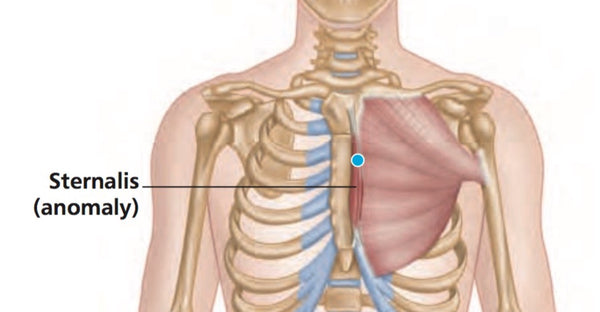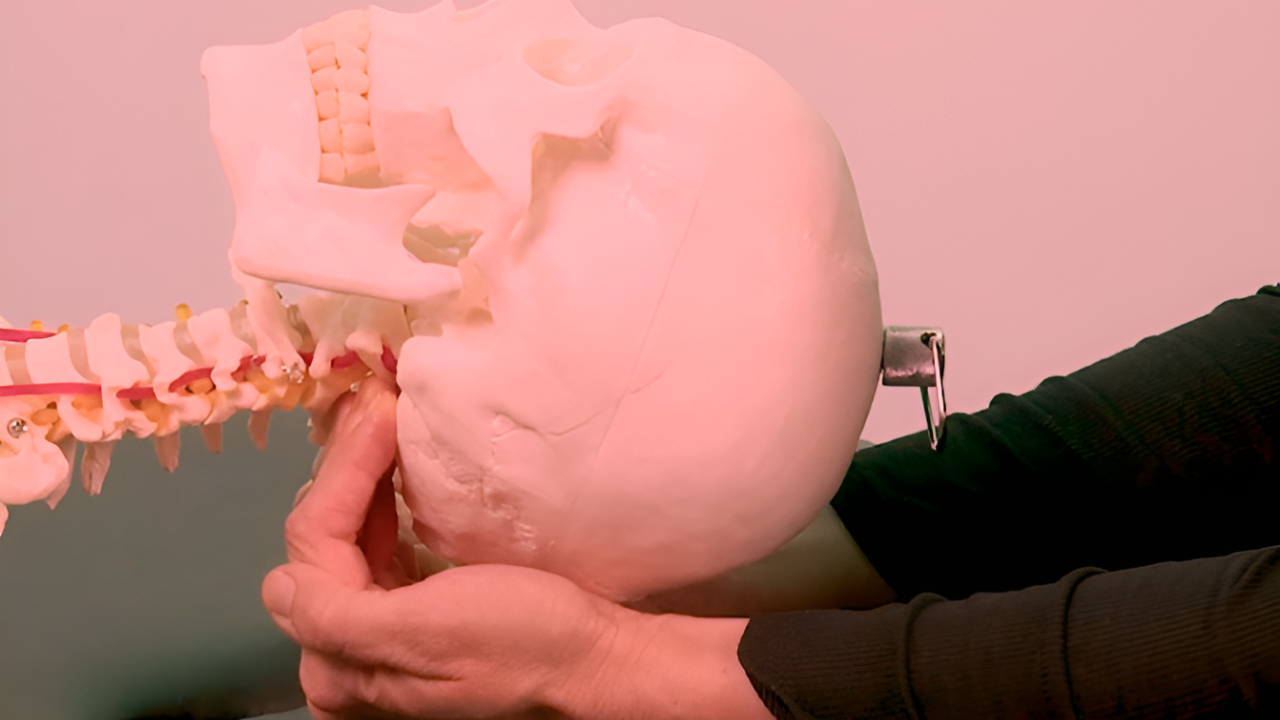Trigger Point Therapy - Sternalis

The Sternalis Muscle is present in about 7% of the population and is insufficiently referenced in anatomy textbooks
Sternalis trigger points can cause considerable pain, and are too often overlooked.
The sternalis muscle is a relative rarity that is believed to be prevalent in around 7-8% of the population. The sternalis typically sits in front of the pectoralis major, and parallel to the margin of the sternum. It may be a variation of the pectoralis major or of the rectus abdominis.
The anatomy of the sternalis is variable and it may be present only on one side of the chest. The function of the sternalis, if any, is still currently unknown.
Unfortunately this muscle is insufficiently mentioned in standard anatomy textbooks, and is all too often overlooked, especially when it comes to trigger points.
Trigger Points
Trigger points in sternalis may develop as satellite trigger points of the sternocleidomastoid muscle, a direct trauma to the area, or may manifest following a heart attack.
In fact, the pain caused by sternalis trigger points may often be mistaken for a heart attack and lead clients to start calling for an ambulance.
Common Symptoms
In most cases, the client will present with a deep ache beneath the breastbone that may also extend across the upper chest, into the front of the shoulder, and down the inner arm to the elbow.
Where the referral is on the left side of the body, it may also extend past the elbow.
Many experts have suggested that a trigger point located around the top of the sternalis muscle may be a source of a dry, hacking cough.
Sternalis trigger points are more common in the upper part of the muscle, and on the left side of the sternum.
Studies have indicated a higher prevalence in females. However it has been proposed that the existence of small, ill-defined or tendinous fibers, could be misidentified as a sternalis muscle.
General Advice for the Therapist
Firstly, remember to check for the presence of this muscle. A prevalence of 7-8% means that about one in fifteen of your clients will present with a sternalis, so it's not that rare!
Make sure to check for trigger points in the sternocleidomastoid (SCM) and the pectoralis major muscles, as these trigger points that may be perpetuating sternalis trigger points.
Find a Trigger Point Professional in your area
Courses for Exercise Professionals
This trigger point therapy blog is intended to be used for information purposes only and is not intended to be used for medical diagnosis or treatment or to substitute for a medical diagnosis and/or treatment rendered or prescribed by a physician or competent healthcare professional. This information is designed as educational material, but should not be taken as a recommendation for treatment of any particular person or patient. Always consult your physician if you think you need treatment or if you feel unwell.

Learn More for Less

Unlimited access to all courses for just $19.95/mo












